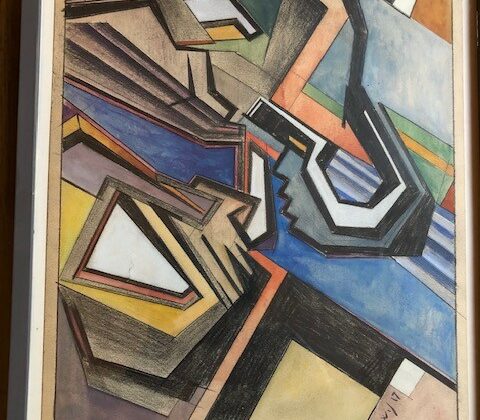Foreign Gods . The Faces as between Africa, Oceania and Modernists.
Francesco Carelli, University Milan, Rome
At Leopold Museum in Vienna, the exhibition “Foreign Gods” allows African and Oceanic art to enter into a dialogue with select works by protagonists of classical Modernism. The presentation calls to mind Europe’s exotic art adventure and its impact on the avant-garde, the fascination art from “ foreign “ cultures reflected in numerous works of classical Modernism. There is a dialogue that the masks and figures enter into with works by Pablo Picasso, Constantin Brancusi, Emil Nolde and Max Ernst.
Classical Modernism’s enthusiasm for what was perceived to be aboriginal and primitive triggered processes of reception and appropriation which were usually situated somewhere between empathy and misappropriation. One could go so far as to suggest that Modernism’s desired primitivism was one of the most creative misunderstandings in art history. This encounter, with all its poetical and esthetical incongruence, provided a confirmation of the expressive power of primitive art by connoisseurs and artists and also decisively influenced western art, or rather prompted it to reinvent itself.
The sacred objects and ritual items created by the peoples of Africa and Oceania once incarnated the power of their ancestors and gave a face to their reverence for nature. In the early 20th century these works were incorporated by Europe into a different kind of pantheon, that of art.
Pablo Picasso once said that he only understood what painting was really about when he was faced with African masks by anonymous artists. From 1905 a general interest in African art awakened in Paris, the thriving arty metropolis and capital city of a large colonial power. Along with the Fauvists surrounding Henri Matisse, many art dealers and collectors of Africana emerged who simultaneously acted as early promoters of the artistic avant-garde. Both in Picasso’s early works as well as in the works of Amedeo Modigliani this manifested itself in a radical transition from face to mask.
In autumn 1906, Henri Matisse showed Picasso a mask at Gertrude Stein’s house in Paris. This was followed by his legendary visit to the Africa department of the ethnological museum Trocadéro the following spring. After the completion of Les Demoiselles d’Avignon in July 1907 the artist began collecting Africana himself. The first half of the year 1907 was dominated by oval faces with large, melancholy eyes, while the calligraphy of the eyebrows coquettishly introduced the purely graphical elements into hi painting. His rendering created in the spring 1907 Women with Folded Hands, a largely graphic work, illustrates his epochal transition from “ Iberian “ to “ African “ faces. Here, Picasso deliberately kept visible the aid lines, and used of hardly legible symbols in the background which make it appear much like a wall that has been scribbled on.
In the summer of 1907 the painter took a crucial step further: the shadows on the faces, or rather mere resonances of them, were now created using hatching reminiscent of African scarification. In the work Mother and Child the faces illustrate like hardly any other how decisive year 1907 and what kind a revelation his encounter with African masks must have been for the artist, as if he had now conceived the two protagonists of his painting as apotropaic masks.
The German Expressionists from the artists’ association Die Brucke were inspired beyond art and attempted a life reform. They drew inspiration from the ethnological museums for their own carvings and furnished their studios to resemble exotic refuges. However, in their quest for artistic aboriginality they often overlooked that tribal art objects are also in fact especially founded on stringent design principles. So, for examples, Max Pechstein and Paul Gauguin embarked in Oceanic adventures.
Constantin Brancusi, the solitary artist, in order to celebrate the sculptures in their pure materiality, he gradually freed them from any details that may have appeared to him as superfluous accessories.
Sphere, cone, cylinder are the three basic shapes which invest the abstract creations of Africa, Oceania and America, the three ones from which everything depictable is derived as for Neoimpressionist, Futurist, Cubists. We see here the Cubist element and especially the relationship between mass and space in African art.
The clichés that they associated with the Dark Continent and Oceania provide essential points of reference to the Dadaists. They sometimes dressed up as wild mask bearers and mocked the European civilized being. This was their way of rejecting Western civilization and the values propagated by it in the face of the catastrophe of World War I. To the Surrealists, by contrast, the art and the myths of Oceania represented media for discovering the hidden realms of the unconscious mind.



